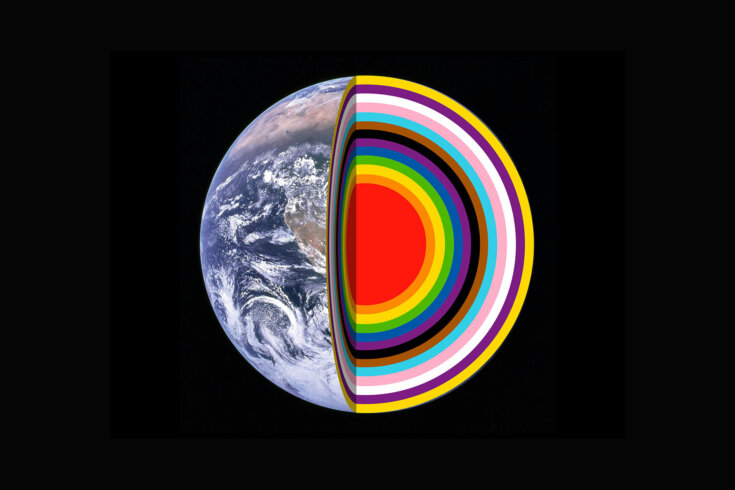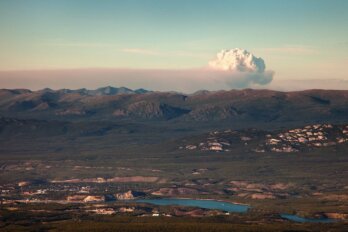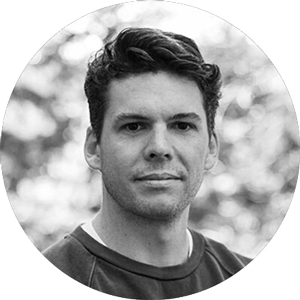Tucked in a hidden corner on Toronto’s south shore lies Cherry Beach. It’s known for its seclusion. To lay on its hot sands or test its warm waters, you have to escape down a long, bottlenecked street. Travelling there is a clarifying experience. At the outset, you’re trapped in the concrete labyrinth of the city, where construction sounds fill your ears and carbon fills your nose, becoming a part of you. Then the skyscrapers melt away and the horizon becomes visible. With a jolt, you find yourself truly outside.
Last summer, I wound my way to Cherry Beach not to tan, but to dance. The queer event organization Yohomo was throwing a sunset rave on a Sunday afternoon. Speakers and a bar were erected on the beach, wires strewn everywhere. My community, the people I had grown accustomed to encountering in dark clubs downtown, looked different in the sun’s orange glow. The sweet smell of fresh water wafted through the air as the soft rush of waves mingled with the DJ’s prickly house beats. It felt as if the music had always been there, like the people and the water and the sand and the wires were equally natural.
Yohomo co-founder Philip Villeneuve makes a point of organizing daytime outdoor events. He wants to get his community out of the city limits and outside, and help them access the liberation he experienced growing up by a national park along Georgian Bay. “Don’t come here and do your city things,” Villeneuve says. “Wrap yourself up in the forest and the grass and the beach.”
Clubs and bars are fun, but dancing under an infinite summer sky expands you. Queer people often have to carve out our own spaces to enjoy a temporary version of the freedom we’re robbed of in our daily lives. Out there, on the beach, the Earth has carved space for us. As Villeneuve puts it, “nature’s not judging us.”
For a long time, queer people gathered outdoors out of necessity. Leaves and bushes and trees provided a shelter where queer people could come together and actualize their sexual desires, away from leering eyes and prejudices. There, in the green, were spaces just as vital as bars—built not from concrete but from the Earth. Cruising was born from persecution but became a powerful statement: if society wouldn’t have us then nature would, because what we want and how we feel is as much a gift from her as the bushes.
But the same seclusion that makes outdoor spaces ideal for cruising can also offer cover for homophobic and transphobic violence. And that’s not the only threat to queer green space: rising waters are swallowing another quintessential Toronto spot, Hanlan’s Point, while gentrification is driving us out of what’s left. Many of us have grown increasingly divorced from the wild world, perhaps having absorbed the untruth that we’re not “natural” despite the abundant evidence—gay vulture dads, lesbian albatross moms, non-binary fungi, and gender-fluid flowers—to the contrary.
If queer people understood our strangeness as an intrinsic quality of nature and not a quirk in the order of things, then we might have a more complete understanding of our place in it—and, hopefully, a more rigorous desire to defend it.
“When it comes to the queer community, there are very intense histories of collective trauma and violence,” Loren March says. March is a postdoctoral fellow at the faculty of environmental and urban change at York University, whose holistic definition for “queer” encompasses not just people who identify within the LGBTQ2SIA+ acronym but anybody from a marginalized group.
“Their connection to natural spaces offers calm and a sense of well-being, which is really important when you’re wrestling with those kinds of realities.”
March is studying the queer community’s relationship to urban outdoor spaces in Toronto, including Cherry Beach. It’s been an important place for decades; hidden away from the city, it’s the perfect place to express yourself in secret. But the bushes could not protect us. Known cruising spots have long been targeted by cops, and Cherry Beach was no exception.
According to the queer publication Xtra Magazine, in the 1980s and ’90s, it was “the city’s worst kept secret” that horrific police violence often took place there—unlawful, vicious beatings carried out on people framed as criminals. Pukka Orchestra had a local radio hit in 1984 with the song “Cherry Beach Express,” which put to music what many already knew: “That’s why I’m riding on the Cherry Beach Express / My ribs are broken and my face is in a mess / And a name on my statement’s under duress.”
Toronto police were said to drive people to the beach to deliver vigilante justice. Xtra quoted a lesbian history project, in which women named Peanut and Arlene said police raped queer women there. People without homes also reported being regular victims. In 2000, Stuart Mitchell died weeks after claiming cops had beat him at Cherry Beach. Thomas Kerr accused nine police officers of beating him with boots and fists there in 1996: the case was resolved out of court, with the Toronto Police Service not conceding responsibility but reportedly agreeing to pay Kerr $500,000 before one of the accused cops could take the stand.
Even those who weren’t assaulted were often harmed. Men charged with public indecency often saw their reputations demolished and their lives ruined. It was understood that Cherry Beach held great risk, and going there meant you might leave with your life irrevocably changed for the worse. And still they went, because it was in their nature to seek satisfaction and community.
I’ve made a pitfall here common to the narrative about queer people and the outdoors—framing these spaces as most precious to cis gay men who use them to cruise for sex. But Toronto’s queer parks and beaches are also vital to the rest of the community. And while our old adversaries, the bigots and cops, may never fully go away, other thorny obstacles lie before us.
March has identified another major threat to queer people’s ability to access natural space: gentrification.
When COVID-19 restrictions meant gatherings could only be held outside, precious outdoor spaces with special significance for queer folks became overrun. The sudden increase in traffic made them less safe for queer people and that safety quotient hasn’t recovered since, March’s ongoing research shows.
Trinity Bellwoods Park, a longtime cruising site, famously attracted thousands during quarantine. The park was notably used as a major encampment by unhoused people—an encampment viciously cleared by police in July 2021. Toronto spent $2 million to uproot people without homes that summer and the message was clear: these parks aren’t for undesirables. All of this has left queer folks, who are also losing indoor spaces at an alarming rate, with even fewer places to go outside.
The moment calls for queer people to take a more active approach to their relationship with nature. One avenue could be a field of study called queer ecology, which considers the natural world through the prism of queerness and centres our special relationships with the outdoors. Emerging over the past half century, it aims to abolish binary thought from our perspectives on nature.
Human beings are cultured to cast judgment about what is truly “normal” or “natural” and what’s not. We want to put things in boxes and binaries; we want to understand by reducing living things to patterns and statistics. But time and again, nature urges us to use our minds expansively, to vibe with the Earth’s complex rhythm instead of trying to endlessly simplify it.
Think of our cultural stance on bugs; many imagine them as less than living, as pests to be killed without guilt, overlooking whole ecosystems that hinge on the prosperity of insects. Binary thought is a disease heterosexual thinking has wrought on us, and the climate is faltering as a result. The modern way of understanding our living planet has failed us. It’s time for something queerer.
That’s what So Sinopolous-Lloyd was aiming at when they co-founded Queer Nature, a group in Washington state that teaches survival skills and how to study animal behaviour in order to reframe the way queer folks imagine the natural world. “Curiosity and practicing awareness is something healing that we can give to other animals and to landscapes,” Sinopoulos-Lloyd says. “But we might also be listened to and heard by other beings. We might get something back.”
Sinopoulos-Lloyd became fascinated with the idea of queer ecology while working on a Vermont sheep farm. In Western culture, we often think of sheep as brainless, following the flock, lacking individual personality. That idea shifted for Sinopoulos-Lloyd when they met Sydney, a black sheep in more ways than one.

This story was originally published as “Out, together: nature welcomes queer people when society doesn’t” by our friends at The Narwhal. It has been republished here with permission.
Most of the sheep avoided Sinopoulos-Lloyd, preferring to cavort with their flock. They seemed to ostracize Sydney, like there was something about her they couldn’t understand. “Sydney was weird”: like a dog, Sydney would approach Sinopoulos-Lloyd in search of affection.
One day, as Sinopoulos-Lloyd sat cross-legged in the green field, Sydney came up to them, circled around a few times, and plopped down in their lap. “I was totally pinned down by this black-haired Icelandic ewe with these little horns,” they say. “She was curious about me in a way that she wasn’t able to express, that wasn’t super typical.”
Sinopoulos-Lloyd developed a fondness for Sydney, seeing a lot of themself in the strange ewe. And they began to understand that the way they felt, that out-of-place feeling that comes along with being queer, was part of nature’s code.






